Recently DPMS Panther Arms–a company known mostly for their budget-friendly AR-15 rifles and .308 AR-10 style platforms–released their GII series of rifles in .308 caliber. The GII promises a host of improvements over previous .308 caliber AR platforms such as weight reduction and increased AR-15 parts compatibility.
These enhancements coupled with the competitive price point make for a very exciting product that we were eager to get our hands on. When DPMS agreed to let us evaluate a couple of their rifles I hit the range to put them through their paces.
The Basics
The GII series of rifles come in six different factory configurations, each designed for different applications. The one that interested me most though was the SASS, which stands for Semi-Automatic Sniper System. Having used various long range semi-automatic rifles extensively as a designated marksman I felt that my experience best suited me to evaluate this particular model.
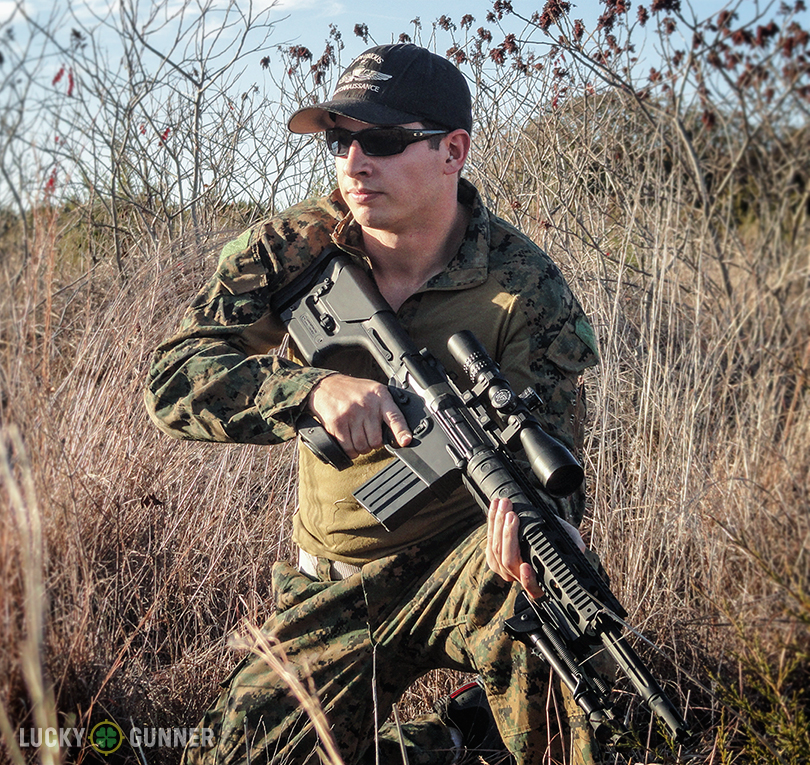
Out of the box I was extremely pleased with the construction and parts choice of the GII rifle. Parts fit together securely and smoothly and it was clear that DPMS put real thought into how they configured this gun. Just like the LRT-SASS before it, the GII SASS utilizes an 18” free-floated barrel which hits an excellent balance of muzzle velocity and maneuverability.
The barrel is fluted and thus shaves weight while maintaining stiffness which is a key component of accuracy. The muzzle is topped off with an attractive flash hider which dissipates muzzle flash in low light in addition to protecting the crown of the muzzle should the rifle get banged up.
All DPMS SASS models feature a fully adjustable Magpul Precision Rifle Stock. This stock is dollar for dollar the best AR stock I have ever used, and is an excellent choice for these rifles. The rifles also feature a target-style pistol grip with an adjustable hand shelf. I found it to be quite comfortable, but it is designed specifically for a right handed shooter. Lefties are likely going to want to swap out pistol grips but they should appreciate the ambidextrous safety that also comes standard on the SASS rifles.
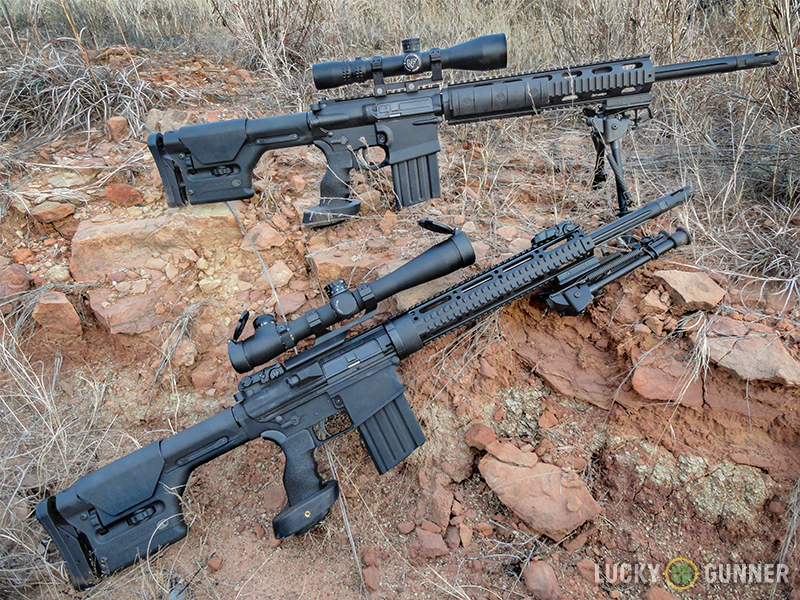
So What’s New?
Parts compatibility and weight reduction are the keystones of the new GII line of rifles. DPMS have done a substantial redesign of the current iteration of the AR-10 platform and may very well set the standard for 7.62 AR platforms of the future. Both receiver halves, as well as the bolt carrier have been made shorter, slimmer, and lighter in order to increase parts compatibility between the GII and the AR-15. The distance between the bore and gas tube, as well as the distance between the bore and top rail have also been shrunk in order to match the respective dimensions of the AR-15 platform.
What this means is that the GII rifles can accept AR-15 fore-ends and rail systems so long as they were designed to fit the standard AR-15 barrel nut. This is good news for the .308 AR world where aftermarket support has been somewhat slower to develop. All AR-15 pistol grips, buffer tubes, stocks, and trigger components are able to be used with the GII rifles as well.
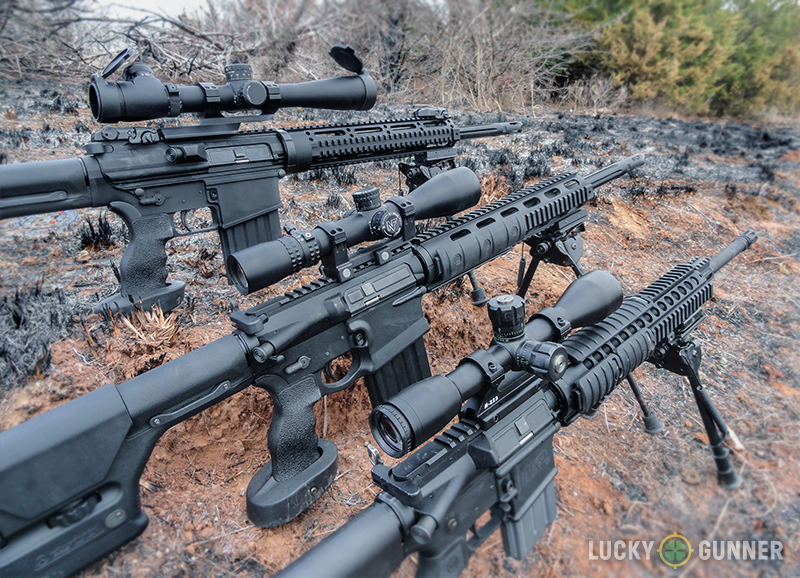
In addition to the overall size changes, DPMS have integrated some really smart features into the shape of the new receivers that improves upon their previous models in almost every conceivable way. The magazine well is now generously beveled and textured making quick magazine changes a breeze and offering more grip for those who prefer a magwell hold.
The trigger guard has been expanded for easy use with gloves, and the magazine release is now easier to engage. The forward assist has been vastly improved over the older design and the ejection port extended for more reliable function.
A look at the internals of the GII reveals that DPMS have really taken to heart the various criticisms of other AR platforms. The gas key is now incorporated into the bolt carrier as a solid piece, thus eliminating the possibility of it loosening up after hard use.
The bolt locking lugs have rounded corners to aid in reliability while also reducing mechanical wear. DPMS have also implemented a dual ejector system and redesigned the extractor, which is now made of a proprietary material and utilizes an elastomer spring instead of a metal coil spring.
Range Performance
All of these features look great on the drawing board, but they don’t mean anything unless the rifle can perform. With that in mind, I headed out to the range with 200 rounds of match-grade 7.62 ammunition to see what the GII SASS could do. I wasn’t able to do any sort of exhaustive torture testing, but I did want to evaluate the rifle under actual working conditions so I skipped the bench-rest entirely in favor of the bipod and the occasional rear sand sock.
The minute I got behind the gun and began zeroing I got a whole new appreciation for how nice and solid everything feels. At 10.5 lbs. sans-optic, the rifle is light enough to carry comfortably and yet heavy enough to sit firmly on target when aiming from the prone. It’s also a full pound lighter than DPMS’s previous iteration of the SASS design.
The trigger is a new two-stage type, with a short slack zone and somewhat “thick” but very crisp break with absolutely minimal over-travel. I didn’t have a trigger scale on hand, but it feels like it’s breaking right at five pounds, which is just right for this type of rifle. This trigger is a vast improvement over the JP Enterprises single stage trigger used on the LRT-SASS.
Zeroing was a painless affair and in no time I was doing test groups at 100 yards with some M118LR ammunition. The GII SASS grouped very well, with the best 5-shot group measuring a mere 0.75” center to center. Considering that I only tested one load and didn’t have a machine rest I’d say that’s pretty impressive for a stock semi-auto, particularly one with a barrel this light.
The typical group size was about 1.25” which is still quite good considering I intentionally avoided stacking the shooting conditions in favor of the rifle. I also noticed that ejection was very brisk and consistent, so the dual ejector system is definitely doing something right.
With the obligatory group testing finished, I decided to stretch the GII’s legs a bit. I originally intended to move up to the 500 yard line in stages but my excitement got the better of me and I began engaging the 500 yard targets straight away. The targets were both freshly painted steel: one being a human silhouette and the other a 12”x12” square plate. Neither target proved to be any kind of a challenge for the GII SASS and even headshots on the silhouette were boringly consistent.
Recoil was typical for a .308 AR platform and the trigger remained very consistent throughout. The only hiccups that occurred during the course of firing were a few failures to feed within the span of about 30 rounds which appeared to be caused by the magazine. Malfunctions aside, shooting the GII SASS was a pleasant experience and I was very impressed with its accuracy and shootability.
Final Thoughts
While I can’t give a meaningful evaluation of reliability based on the limited sample size and round count, I can say that in the face of what the GII SASS offers right out of the box it’s hard to be overly concerned with a few isolated magazine-induced malfunctions, particularly when quality aftermarket magazines are so readily available.
The GII design incorporates a ton of popular and sensible features and is a hands-down improvement over the LRT-SASS and other AR-10 rifle designs. With a street price of about $1900 it certainly isn’t cheap, but it is a solid performer and you get a lot with the GII that you just can’t get with any other AR-10 platform.
Overall, I really have to hand it to DPMS here. They’ve demonstrated an understanding of the market and they produced something that not only addresses the issues associated with other .308 AR platforms (including their own), but also offers some great features at an affordable price point. It’s good to see that there is still room for innovation in the AR world and that there’s a company willing and able to do it.
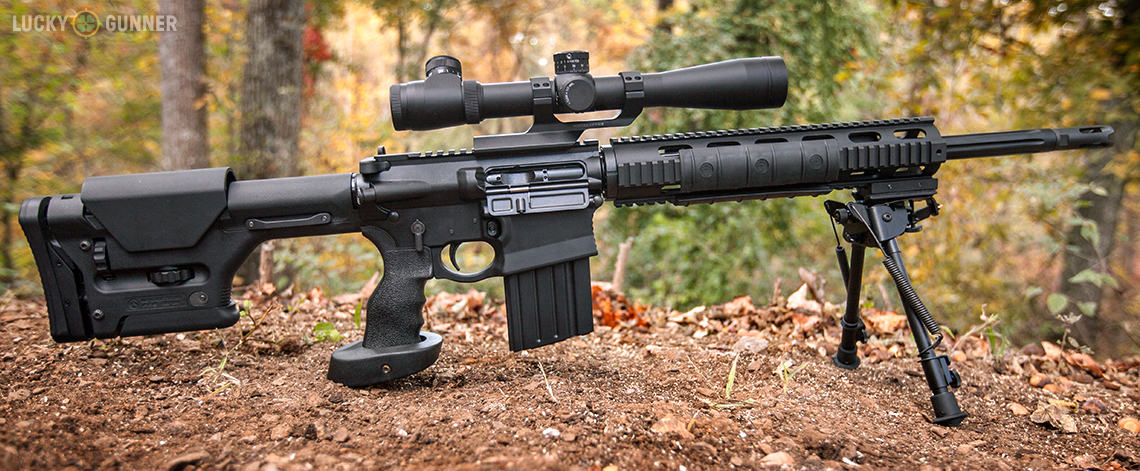

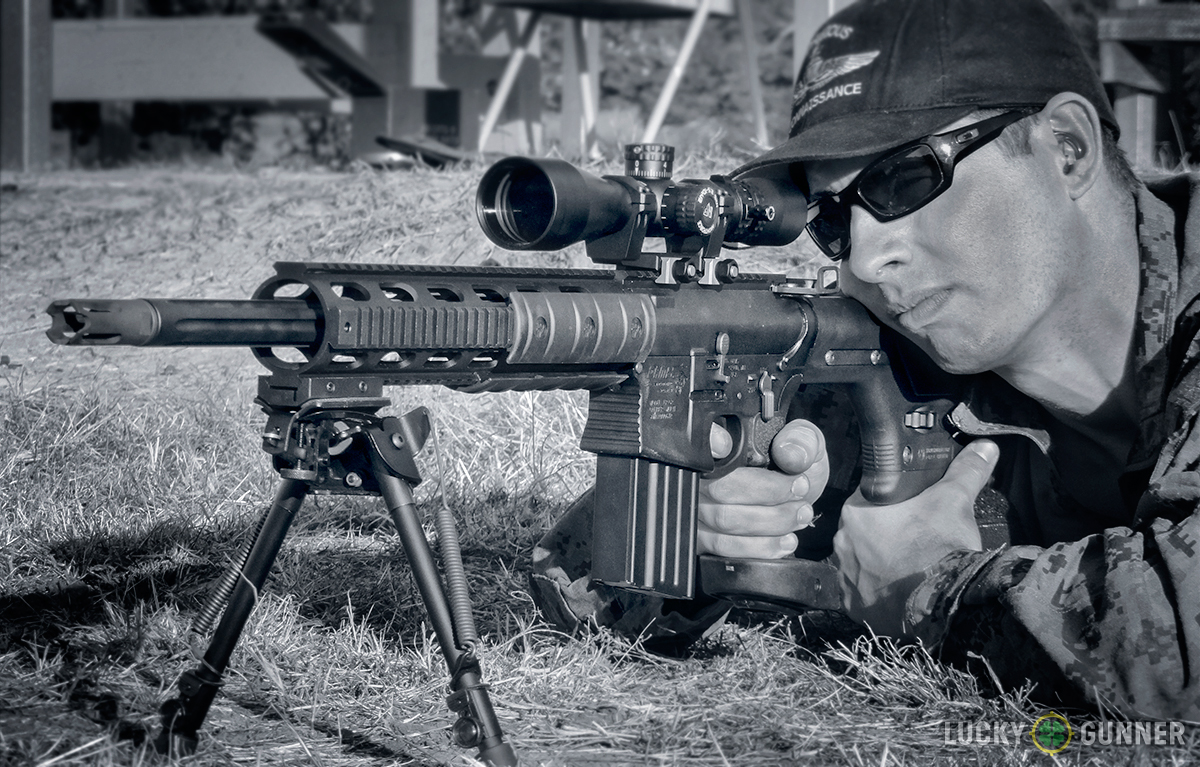
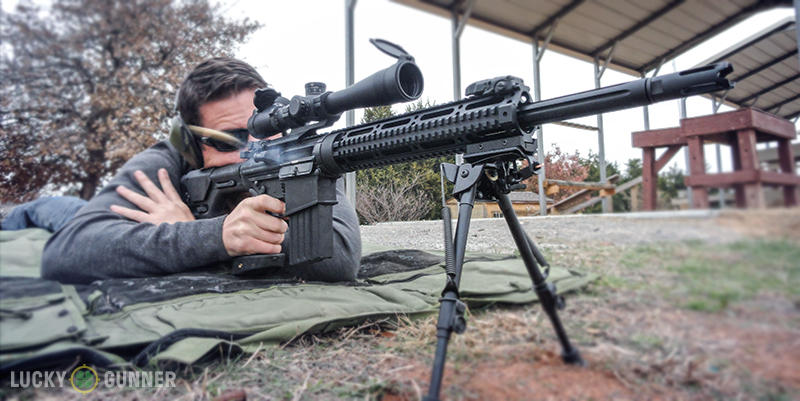
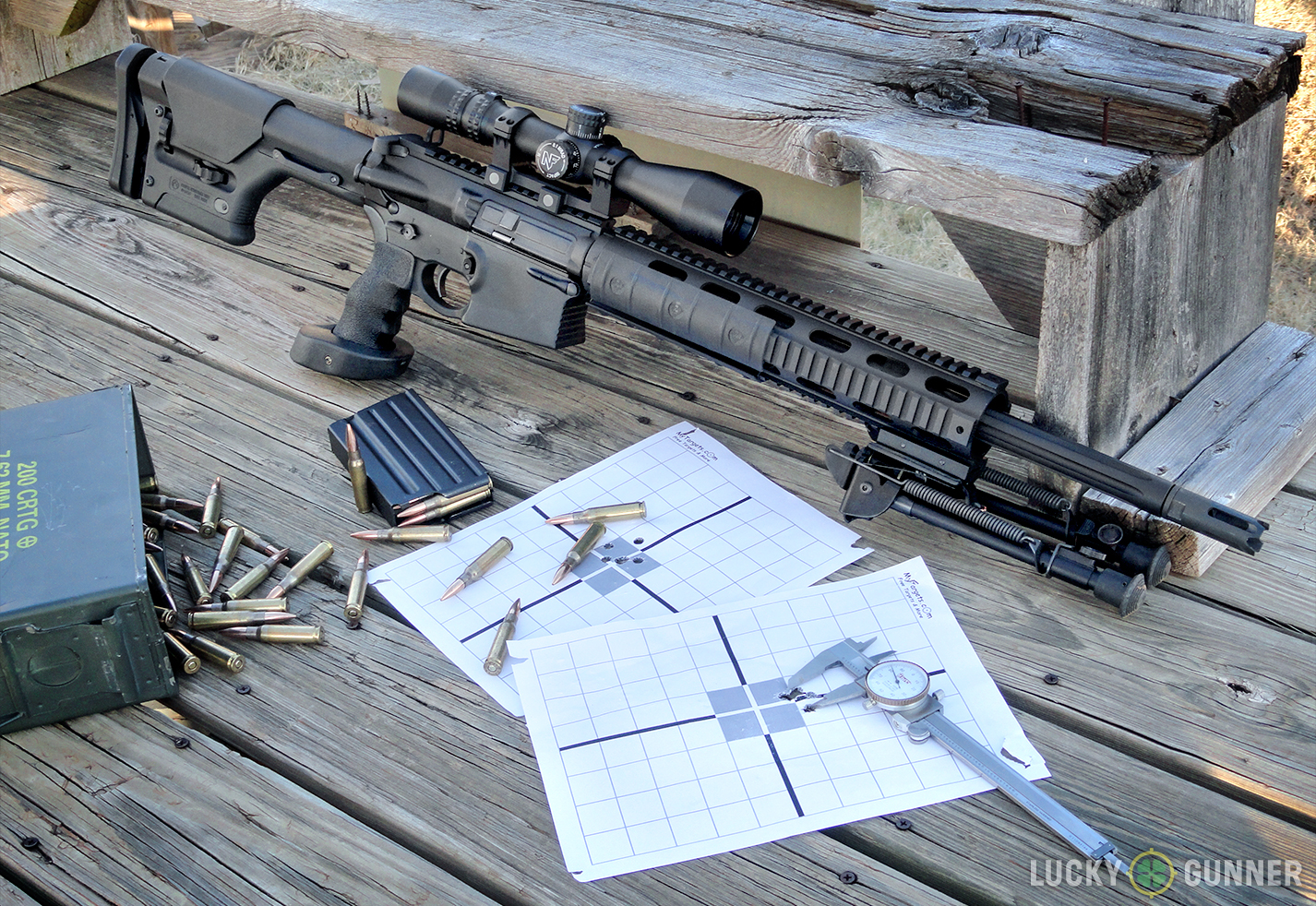
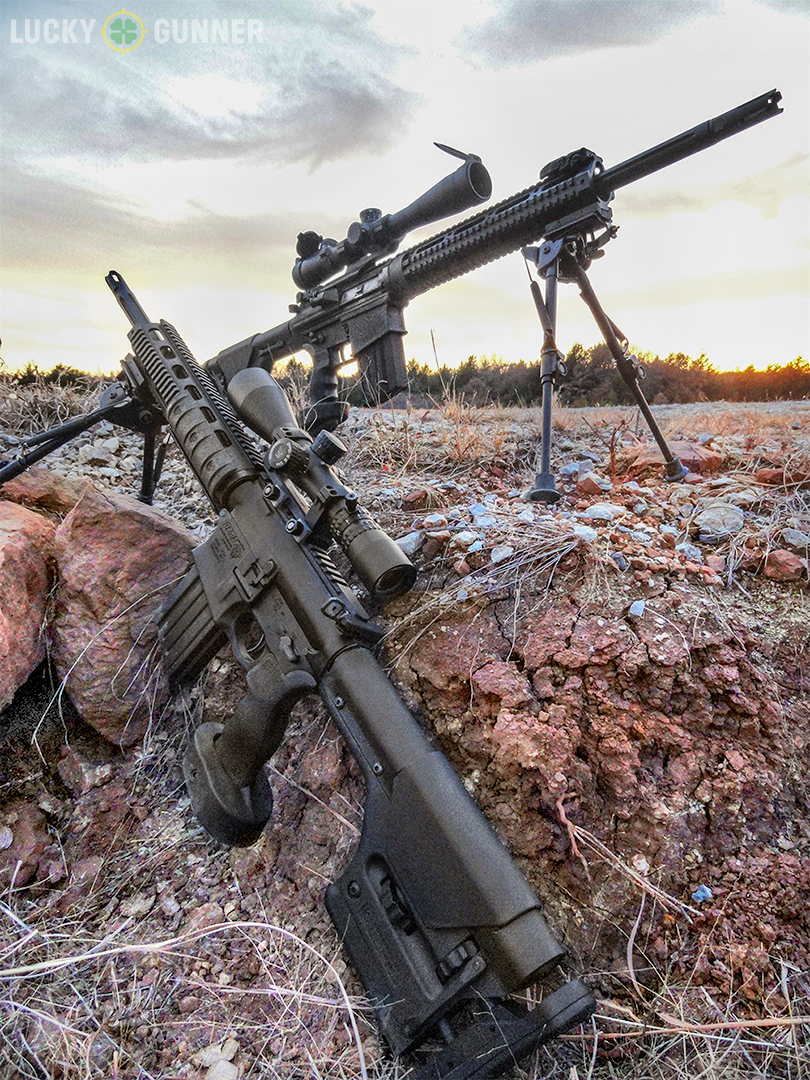
What optics were you running?
What optics were you running?
I have been looking at it for a while. Now that I have read this article I Ann pretty close to pulling the trigger on one myself. And I also would like to know what optic you were using, and would you change the optic now that you have used it.
Thanks a lot,
God Bless
Nice overview. I'm always excited by lower weight rifles. But, it's a shame you didn't test a different ammo. I'd reckon that the failures to feed from the magazine had at least a little bit to do with the seating depth of the M118LR. It would be nice to know for sure though.
I have been looking at it for a while. Now that I have read this article I Ann pretty close to pulling the trigger on one myself. And I also would like to know what optic you were using, and would you change the optic now that you have used it.
Thanks a lot,
God Bless
Very informative ,love the caliber!
Nice overview. I’m always excited by lower weight rifles. But, it’s a shame you didn’t test a different ammo. I’d reckon that the failures to feed from the magazine had at least a little bit to do with the seating depth of the M118LR. It would be nice to know for sure though.
I love my GII SASS. I have put 1000 Rounds down range with no feeding issues. I sometimes wonder why it has a forward assist, it does flatten the tip of my brass.
Btw that's with 147-168 grain loads, brass and steel. Magpal mags.
Very informative ,love the caliber!
Very good guess and I thought so too at first, however upon closer inspection it looked like the bolt just barely slipped over the case rim. When I tried to duplicate the failures I found no evidence that the projectile length had any negative impact on feeding.
The optic I used was a Nightforce NXS 2.5-10x42mm scope with the MilR reticle and mil turrets. Great scope for this rifle and the ranges I shot it at. I would definitely recommend a milradian optic for this type of rifle.
Nightforce NXS 2.5-10x42mm scope with the MilR reticle
I love my GII SASS. I have put 1000 Rounds down range with no feeding issues. I sometimes wonder why it has a forward assist, it does flatten the tip of my brass.
What type and power score are you using? If you don’t mind me asking. And would you change scores for any reason.
Thank you, God Bless
Duane
Attractive weapon but its a DPMS. A copy of a real AR-10 by Armalite. The Armalite is the real deal AR-10….a Superior weapon and less money. Why would someone spend more$$$ for a non-standard copy of a AR-10???
Btw that’s with 147-168 grain loads, brass and steel. Magpal mags.
Attractive weapon but its a DPMS. A copy of a real AR-10 by Armalite. The Armalite is the real deal AR-10….a Superior weapon and less money. Why would someone spend more$$$ for a non-standard copy of a AR-10???
Because its a whole lot lighter and better. Just because Armalite made it first doesn’t mean its better. This is Gen2 and I bet Armalite will be following them soon
Also, the current ArmaLite is not the same company as the original anyway, so their AR-10 is no more the “real deal” than any other copy. From Wikipedia:
“[Armalite] ceased operations in the early 1980s. The design rights and name were purchased in 1996 by Mark Westrom, who re-launched the company as ArmaLite, Inc., currently located in Geneseo, Illinois. The company sells a variety of AR-10 and AR-15 based designs.”
What type and power score are you using? If you don't mind me asking. And would you change scores for any reason.
Thank you, God Bless
Duane
Hello Duane,
My phone does not care for this site much. Anyway, forgive me but I do not understand the question.
My buddy has the Armalite, he bought it so he could say "I have the one that started it all" it jams, well he had to modify his Magpal mag because the Armalite would not accept them.
Hello Duane,
My phone does not care for this site much. Anyway, forgive me but I do not understand the question.
My buddy has the Armalite, he bought it so he could say “I have the one that started it all” it jams, well he had to modify his Magpal mag because the Armalite would not accept them.
The DPMS looks to be made of quality material. I would gladly pay more for dependability and quality than the Armalite. I really don't see where anyone would look at it as a non standard copy. the quality is what counts in my book!
The DPMS looks to be made of quality material. I would gladly pay more for dependability and quality than the Armalite. I really don’t see where anyone would look at it as a non standard copy. the quality is what counts in my book!
If i wanted to change the trigger on this, can i just use standard AR-15 triggers??
I think that should work, but you’ll need to check with the manufacturer of the aftermarket trigger to be sure.
Yes
the trigger on this must be about 10 pounds. terrible for long range shooting. i will be looking to fix or change.
its actually 5 pounds…
Just bought the GII SASS. Waiting on it to arrive. Seems everyone is out of stock. Took forever to locate one. Got big glass for it too, a Weaver 4-20 x 50 Tactical 30-mm SF Matte Mil Dot. Now I have to decide on what to use to mount my glass to the weapon. Any suggestions?
My unboxing of the DPMS G2 SASS 308
https://www.flickr.com/photos/shadeogray/17727281909/in/album-72157653113694026/
https://www.flickr.com/photos/shadeogray/17293096543/in/album-72157653113694026/
DPMS G2 SASS 308 Unboxing
I went to the range yesterday and fired off at long last my brand new DPMS G2 SASS. The thing was deadly accurate but chewed the hell out of the butt of the brass. I think the chamber or head spacing is out of spec AND a slight overpressure issue. Called DPMS and they said send it to them. Waiting on UPS now. Hope DPMS can fix or replace the gun.
Got the SASS back from repair, they said they put in a “NEW STYLE BOLT” Should fix the issue. However they did not replace my unusually worn firing pin. WTF? So I guess it’s time to dig in and fight them on that.
DPMS sent me out a new pin no problem. Sweet.
I’m curious about the issue you had with your SASS… I bought a new GII Bull from Cabela’s about a year and a half ago. LOVE the rifle, especially after swapping out the fixed A2 stock with a PRS, adding a Miller bi-pod and a Trijicon tr23-2g optic. The only issue I’ve found is unusual scoring on the firing pin at two locations. I’ve polished it out every time I clean the BCG after use, but it keeps coming back. Can’t seem to find anything out of the ordinary in the bolt or the carrier to cause this. Did you have a similar experience?
That was exactly my issue with the firing pin. But it works with no issues. I would not think to much on it unless it causes a functioning issue. Keep a spare pin on hand.
What ever they did it corrected the problem and like always it is accurate and reliable. I have fed about 200 rounds with zero malfunctions using only 308 Win 168 gr BTHP Match so far. I am very happy with this weapon.
I have had my DPMS SASS for about 2.5 years now and have had no problems at all. Right out of the box I was really impressed with the accuracy and ability to remain on target after each round was fired. From match grade ammo to Wolf , there have been no failure to feed or fire issues. Great rifle and well worth the money.
Mine was the G2 version. Only issue was it was destroying my brass. Shoots awesome though. VERY accurate, no failures of any type.
I’ve had mine for about a year now, shot around a 100 rounds through it and never a missed anything. This is a great AR
can a suppresor be attached
This rifle in a 6.5 Creedmore would be interesting.
Its a Bag of SHit! Dont buy this weapon. Every other round hangs. DPMS has 200K warrenty issues over this weapon. Dont get me wrong. It could be a beast of a rifle in an AR platform. However when you have chambering issues and 9 out of 10 customers ” Check the internet” are scrambling to understand the possible causes why! I am sure DPMS could do a better job standing buy those that spend 2500 for a rifle to have it jam on every other shot. I mean you can only scream the consumers dont know what there doing too long before the numbers of yoru weapons start adding up.